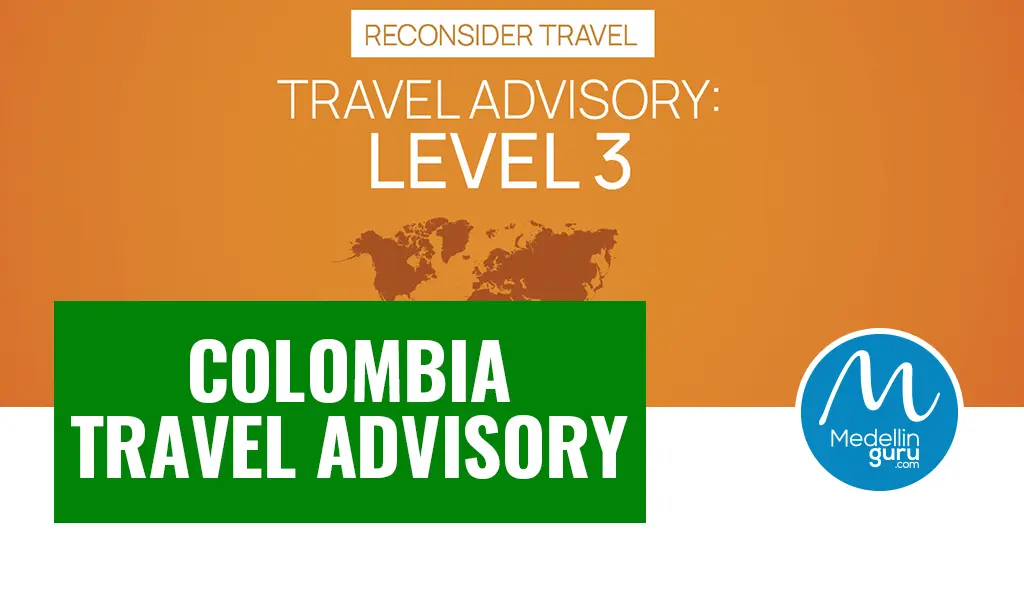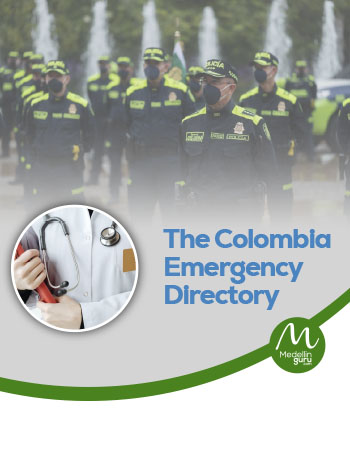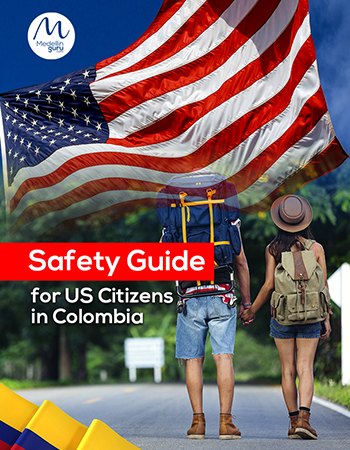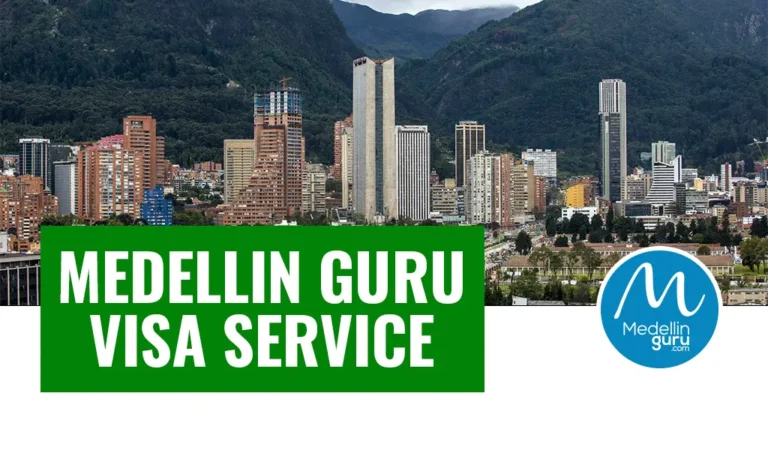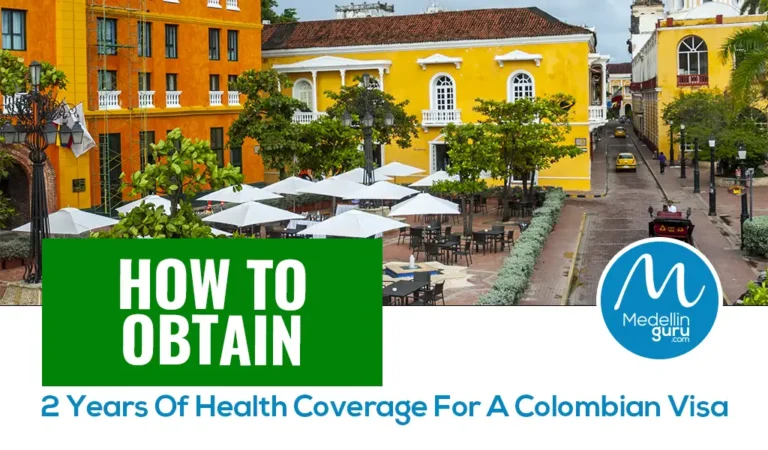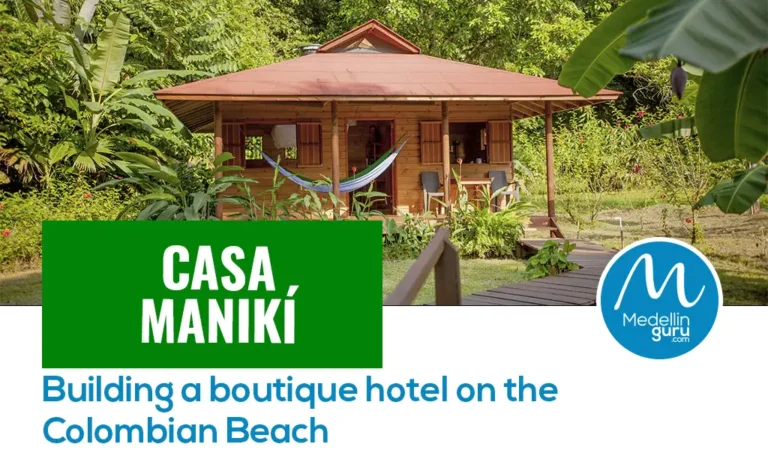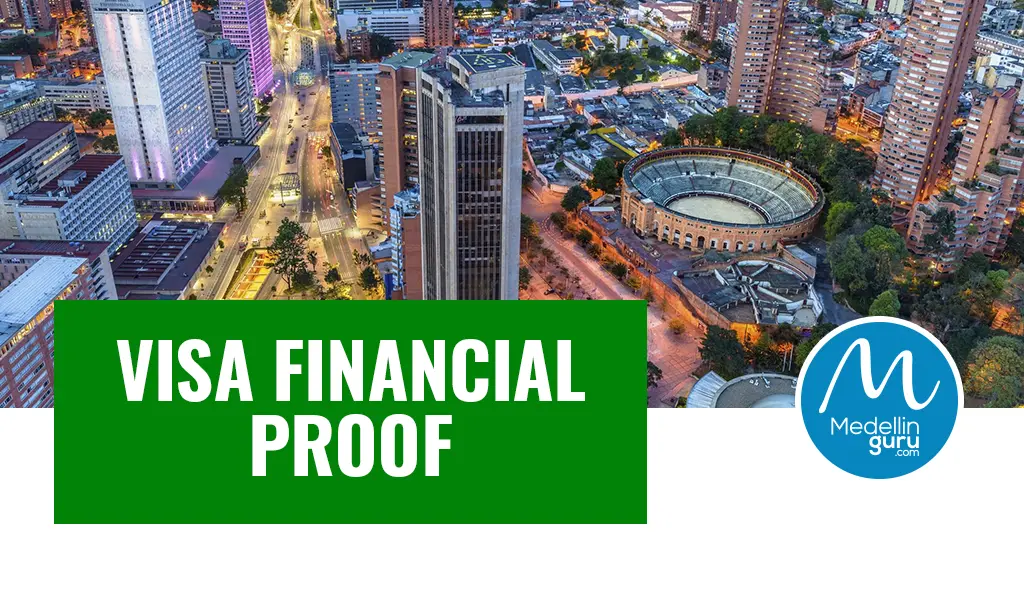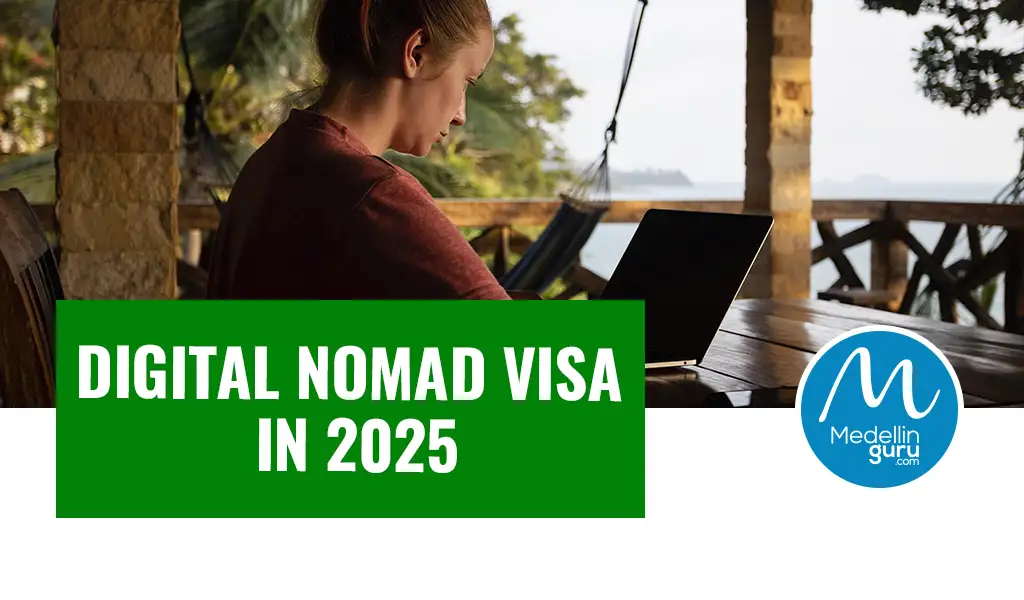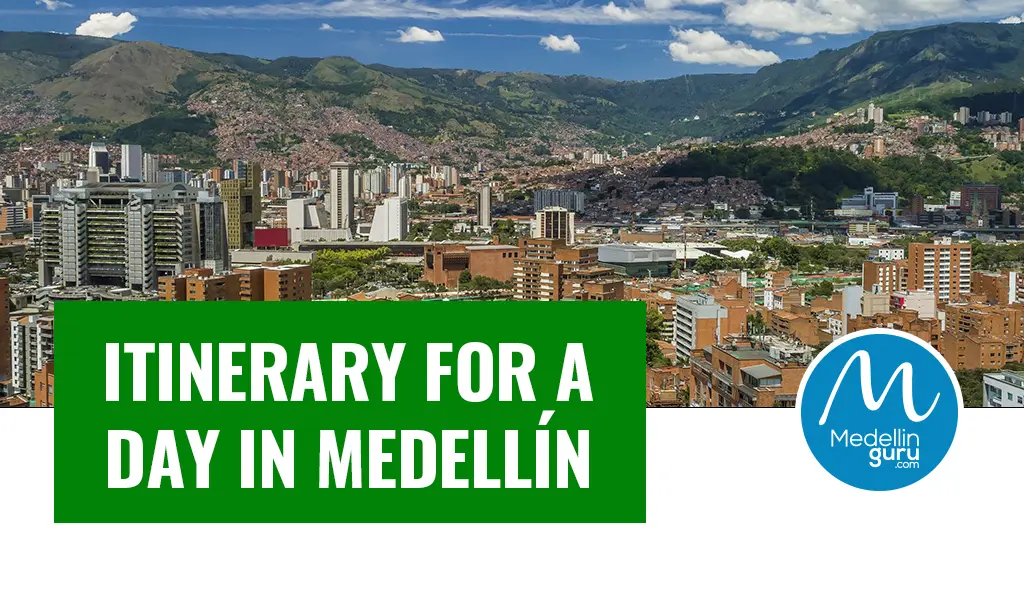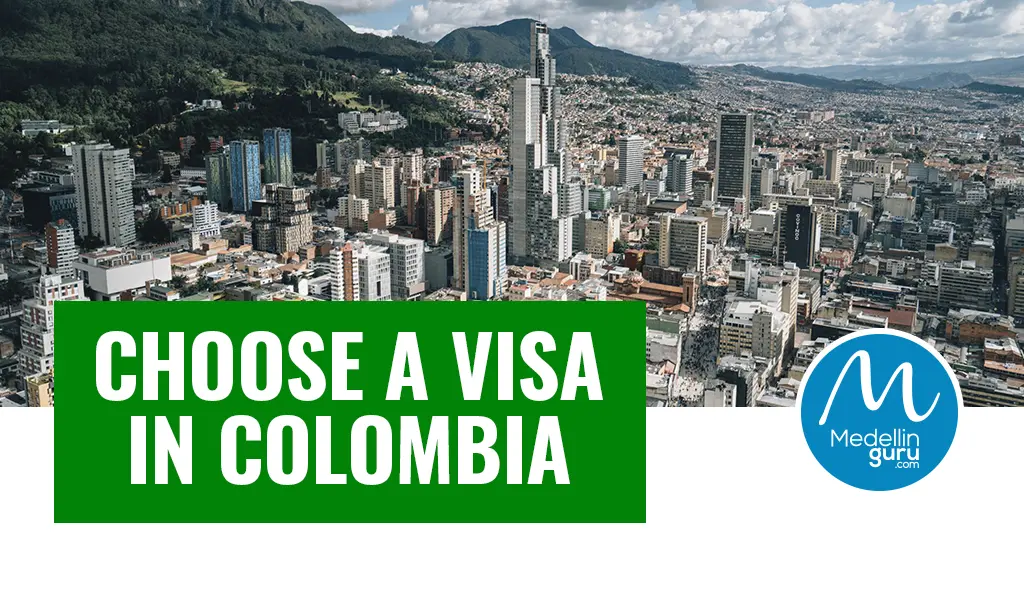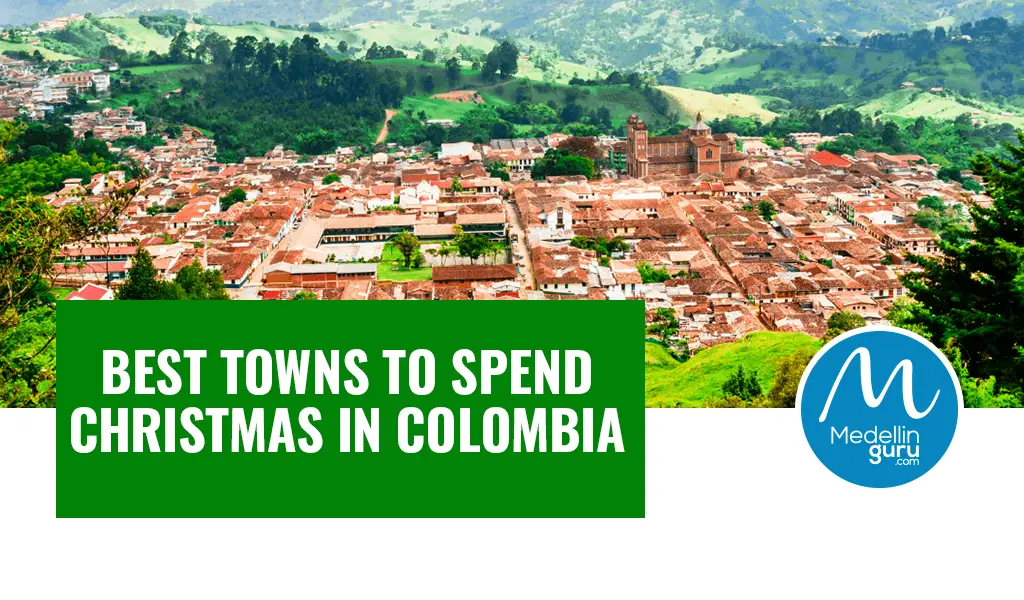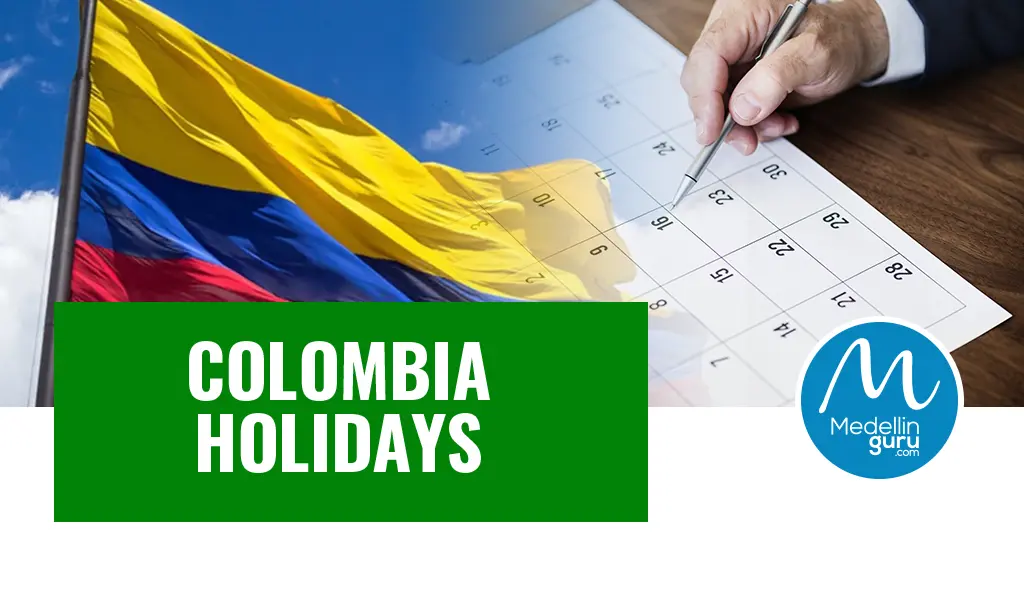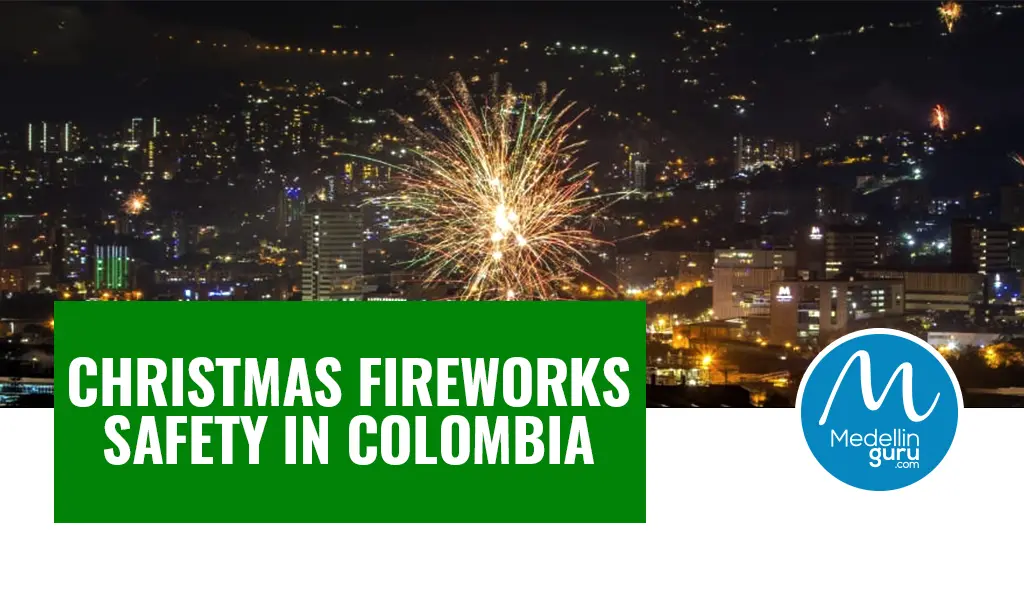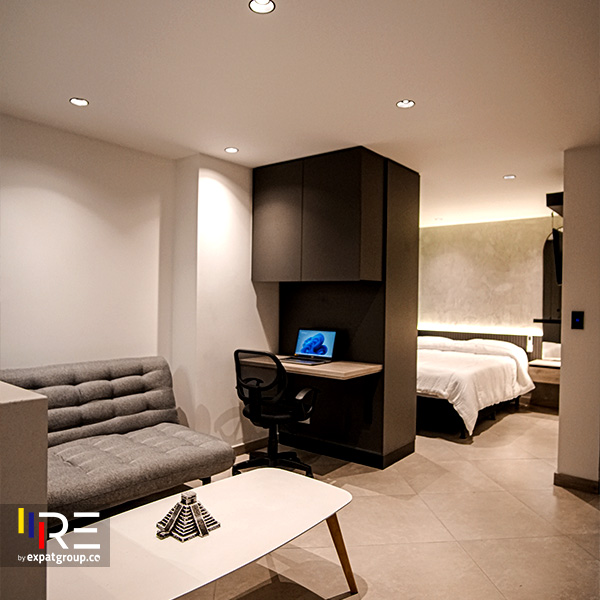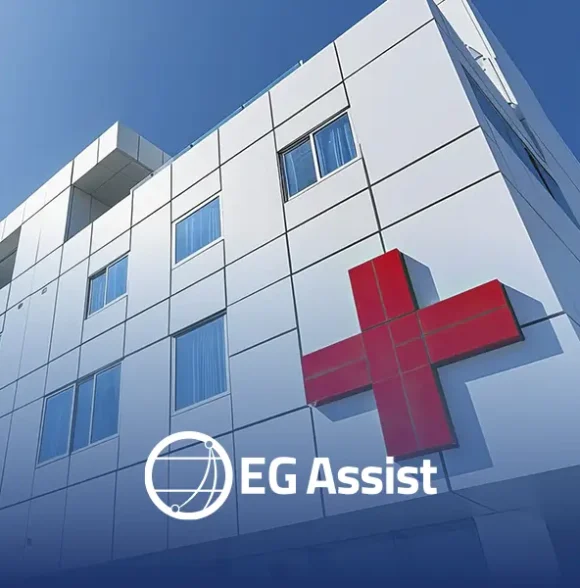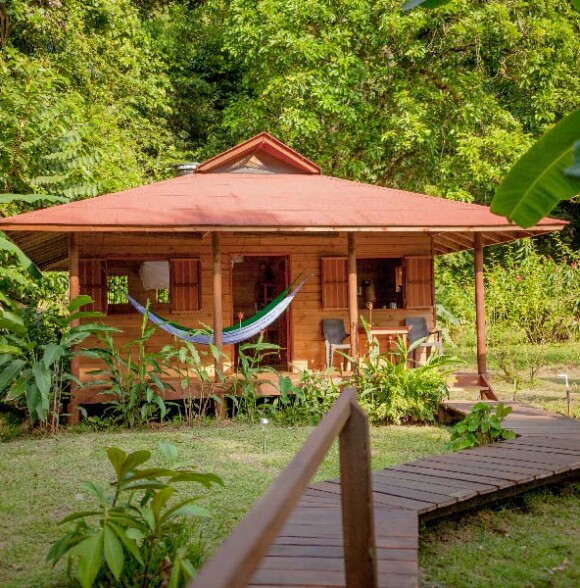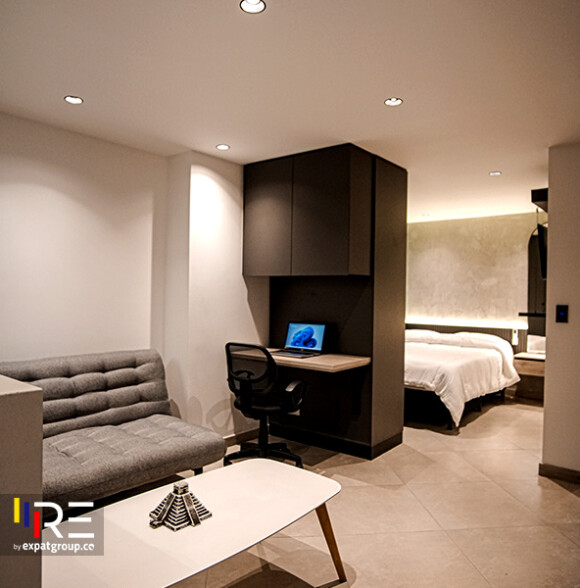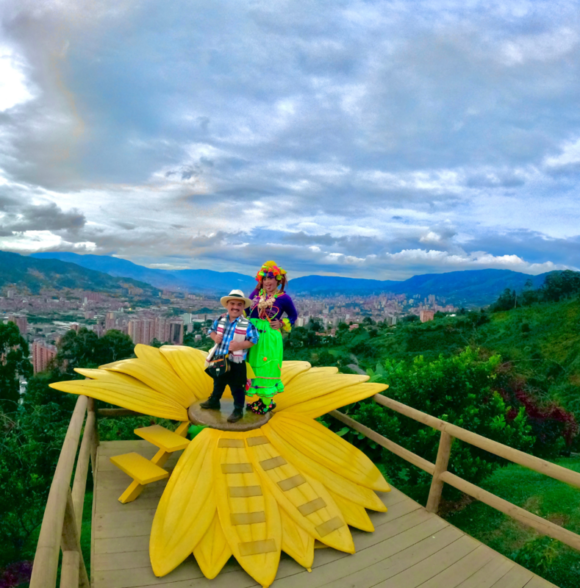Colombia is a vibrant, colorful country packed with rich culture, breathtaking landscapes, and unforgettable adventures, from the Caribbean coast to the Amazon rainforest, and everywhere in between. Whether you’re planning a trip or considering settling down in Colombia, staying aware of the current safety situation is key to having a smooth and worry-free experience. While Colombia has made major strides in tourism and security, some regions still carry risks such as crime, civil unrest, and other dangers. This guide breaks down the places to avoid across Colombia and offers practical advice to help you stay safe and make the most of your visit or expat life. After all, the best journeys happen when you’re well prepared.
What Is the U.S. Embassy Travel Advisory?
Travel advisories are official warnings and guidance issued by government agencies, such as the U.S. Department of State, to help travelers understand the safety, security, health, and logistical risks in foreign countries. These advisories serve a crucial role: they inform U.S. citizens and, often, travelers from other countries about potential dangers they might encounter abroad and offer practical recommendations for staying safe.
To create these advisories, consular officials gather intelligence from U.S. embassies, local authorities, and various international sources, continuously monitoring conditions that could affect travelers, such as crime levels, political unrest, terrorism, natural disasters, and health outbreaks.
Advisories are reviewed regularly and updated whenever conditions change significantly. They use a straightforward four-level system, making it easier for travelers to assess risks and make informed decisions:
Level 1
Level 2
Level 3
Level 4
Some countries or specific regions within countries may have different advisory levels depending on localized conditions. These advisories are essential not only to avoid dangerous situations but also to guide travelers on preparations such as vaccinations, documentation, and emergency resources.
What Is the Travel Advisory for Colombia in 2025?
Understanding the official Colombia travel advisory guidance is your first step toward a safe and enjoyable trip in 2025. The U.S. Department of State, along with similar advisories from Canada, the UK, and Australia, recommends exercising a high degree of caution when visiting Colombia due to ongoing risks such as crime, terrorism, civil unrest, and kidnapping. While Colombia has made impressive progress in security and tourism infrastructure in recent years, it remains critical for travelers and expats to stay alert and informed about the current situation.
The U.S. Department of State currently assigns Colombia a Level 3:
What Are the Main Risks?
The principal concerns highlighted in the Colombia travel advisories include:
- Violent crime: Includes armed robbery, murder, and muggings, which may occur in urban, rural, and remote areas.
- Terrorism: Threats from guerrilla groups, paramilitaries, and criminal organizations remain present in several regions, causing targeted and indiscriminate attacks.
- Civil unrest: Unpredictable demonstrations, protests, and roadblocks often occur throughout Colombia, sometimes escalating to violence, disrupting travel plans, and exposing travelers to danger.
- Kidnapping: Especially in remote or conflict-affected zones. This remains a consistent risk, with criminal groups and armed factions targeting foreigners and locals alike.
Which Regions and Cities Should Foreigners Avoid in Colombia?
To maximize your travel security in Colombia, it’s crucial to identify and avoid specific regions deemed highly dangerous by international advisories. These “Do Not Travel” zones are typically characterized by active illegal armed groups, high rates of violent crime, and limited government control.
Why Avoid Arauca, Cauca, and Norte de Santander?
The departments of Arauca, Cauca (with the clear exception of its capital, Popayán), and Norte de Santander are designated as Level 4: Do Not Travel zones by the U.S. Department of State, along with similar warnings from other countries, such as Canada and Australia. This exclusion of Popayánis important to note. While the rest of Cauca is highly dangerous, Popayán itself is considered relatively safer and is specifically excluded from the strictest travel restrictions.
c ullamcorper mattis, pulvinar dapibus leo.
These three departments are plagued by persistent violent crime, including armed robbery, murder, and extortion. They also face ongoing threats from terrorists and illegal armed groups, such as dissident guerrillas and paramilitaries who continue to operate there. Kidnapping for ransom remains a critical concern, making non-essential travel to these regions extremely hazardous.
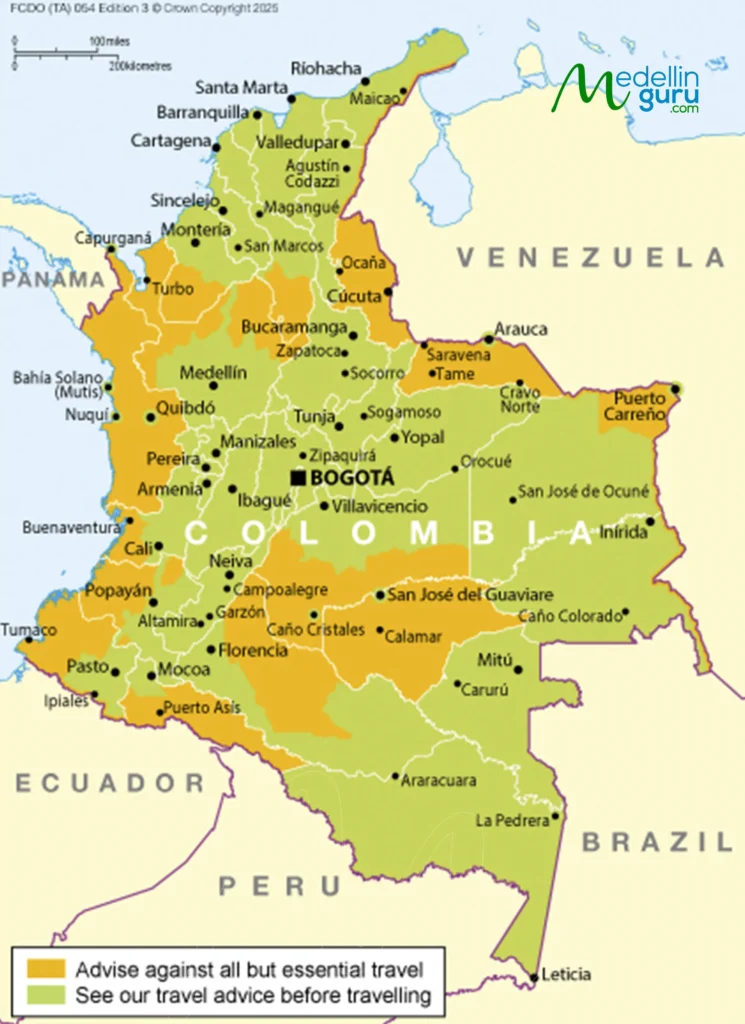
What Are the Risks Along the Colombia-Venezuela Border?
The Colombia-Venezuela border is among the most dangerous areas in the country and should be completely avoided. This region experiences rampant crime, a very high risk of kidnapping, and ongoing armed conflicts among illegal armed groups. The border itself is poorly marked, increasing the risk of accidentally crossing into Venezuelan territory, which carries its own Level 4: Do Not Travel advisory due to severe risks such as wrongful detention, torture, and kidnapping. The closure of official border crossings and the persistence of illegal “trochas” (unofficial crossings) exacerbate security challenges.
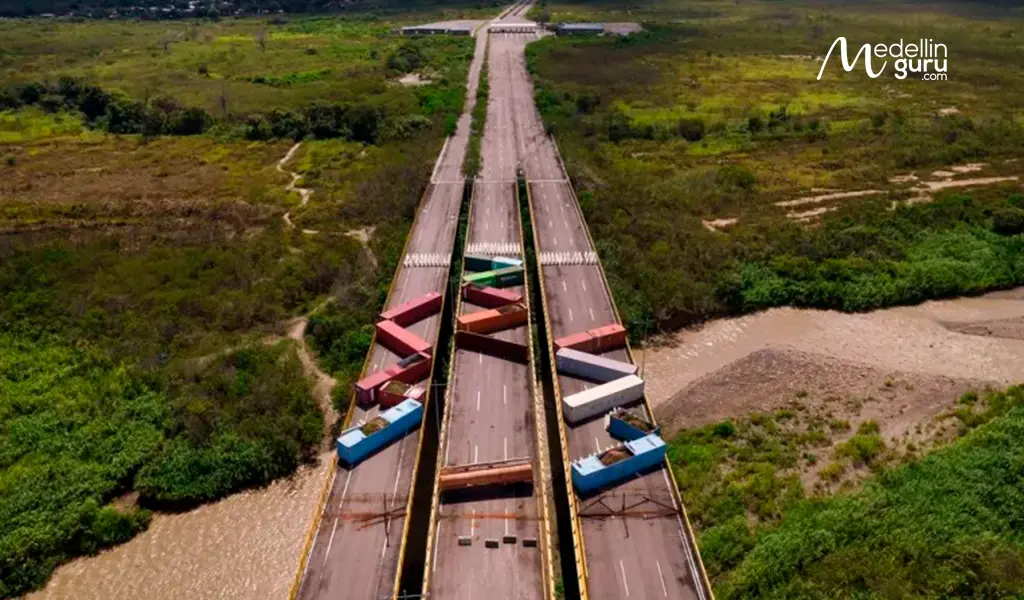
Are There Other High-Risk Areas to Skip?
Chocó Department is one of these high-risk regions, especially along its land routes, where criminal organizations and illegal armed groups maintain strong influence. However, specific tourist spots like Nuquí and Bahía Solano, both accessible primarily by air, are considered safer and welcome visitors who take usual precautions. Travelers should avoid overland travel through Chocó due to the prevalence of violence and security instability.
Parts of Antioquia outside Medellín and its metropolitan area, particularly the Urabá and Bajo Cauca regions, also see high levels of crime related to drug trafficking and armed conflict, making them unsuitable for tourists.
Other departments with notable risks include the southern parts of Bolívar, Caquetá (except Florencia), Casanare (except Yopal), and Southern Meta (excluding Caño Cristales if accessed via reputable tours). Additionally, areas in Nariño (especially the south Pacific and Telembí regions), Putumayo, and Vichada (except Puerto Carreño city) harbor illegal armed groups posing significant threats to travelers.
Finally, travelers should avoid the Darién Gap entirely, the dense jungle area along the Panama border. It is recognized as an exceptionally dangerous zone due to a combination of harsh terrain, criminal activity, and lack of infrastructure, making any attempt to cross it life-threatening.
Where Are the Safe Zones and Tourist-Friendly Areas in Colombia?
Knowing the Colombia travel advisory helps you spot the risks, but it’s just as important to understand where you can explore safely and confidently. Most of Colombia’s popular tourist spots and major cities are generally secure, thanks to strong police presence and infrastructure designed for international visitors. With some common-sense precautions, you can enjoy the vibrant culture, beautiful landscapes, and warm hospitality that Colombia has to offer.
Medellín is largely welcoming and enjoyable, especially in its well-known expat and tourist neighborhoods. Whether you’re visiting or settling down, neighborhoods like El Poblado and Laureles offer a great mix of vibrant local culture and reliable safety, making them favorites among travelers and digital nomads alike.
Major Colombian cities like Cartagena and Bogotá also offer well-established safe zones popular with tourists. In Cartagena, the historic Walled City (Centro and San Diego) and the modern high-rise neighborhoods of Bocagrande and Castillogrande benefit from strong police presence, making them secure and vibrant places to explore.
Bogotá’s safest areas are mostly in the northern part of the city, including Usaquén, El Chicó (with Parque de la 93 and Parque el Virrey), Zona Rosa/Zona T, and Chapinero (especially Chapinero Alto, Zona G, and Quinta Camacho). While the historic district of La Candelaria is a must-see during the day, visitors should be careful after dark and opt for taxis.
Colombia’s diverse cities offer plenty of safe, welcoming places for travelers seeking a mix of culture, adventure, and comfort. For example, Santa Marta, nestled along the Caribbean coast, provides a laid-back atmosphere rich with natural beauty and historical charm. Tourists flock to its beaches and nearby Tayrona National Park, where the vibe is relaxed and security is generally good in the main tourist hubs.
Over on the northern coast, Barranquilla pulses with vibrant energy, especially during Carnival season when the city’s lively streets fill with music, dance, and colorful festivities. Thanks to increased police presence during events and in popular areas, visitors find it a safe and fascinating place to experience Colombia’s Caribbean culture.
In the mountainous northeast, cities like Bucaramanga and the surrounding Santander region offer a calmer pace and pleasant weather. These areas enjoy lower crime rates and are increasingly favored by travelers and expats looking for authentic Colombian life combined with good infrastructure and safety.
How Can Travelers Stay Safe While Visiting Colombia?
Beyond knowing which areas to avoid, adopting smart Colombia safety tips for tourists is essential for a smooth and worry-free trip, whether you’re exploring Medellín’s bustling streets or soaking up Cartagena’s colonial charm.
-
DO
Use official taxis or ride-hailing apps like Uber, Didi, or Cabify. Avoid hailing cabs directly on the street, especially at night, to reduce the risk of “express kidnappings” or robberies.
-
DON'T
Flaunt signs of wealth.Leave expensive jewelry, watches, and large amounts of cash at home. This is the heart of the Colombian safety phrase, no dar papaya, meaning don’t make yourself an easy target.
-
DO
Stay alert in crowded places like markets, festivals, and public transport. Pickpocketing is common, so keep your valuables secure in front pockets or a money belt.
-
DON'T
Accept drinks, food, cigarettes, or anything from strangers. Drugging incidents — including with scopolamine — have been reported.
-
DO
Be cautious with online dating apps. Always meet in public, well-lit places and tell a trusted friend where you’re going.
-
DON'T
Resist if confronted during a robbery, your belongings can be replaced, but your safety is paramount.
-
DO
Use ATMs inside banks or malls during daylight hours, cover your PIN, and watch for suspicious behavior. Avoid street ATMs at night.
-
DO
Avoid political protests and large crowds, which can turn violent and disrupt travel plans.
-
DO
Choose reputable tour operators, especially for excursions to remote areas or specialized tours like those in Comuna 13
To make your trip even safer and more enjoyable, be sure to check out our detailed security guides. From navigating public transport to understanding safe neighborhoods and emergency contacts, our resources equip you with everything you need to travel confidently across Colombia. Staying informed, prepared, and connected to local insights is the best way to turn your Colombian adventure into a smooth and memorable experience.
Medellin Guru's safety and security series
Safety is the biggest concern of foreigners visiting Colombia or planning to move to Colombia. So, we have a series of 18 popular articles about safety and security in Colombia:
- Is Medellin Safe? U.S. Embassy Colombia Talks About Security for U.S. Citizens
- Emergency Directory Guides to Ensure Your Safety in Colombia
- Is Colombia Safe? Colombia Security and Safety Tips
- Is Medellín Safe? Medellín Security and Safety Tips
- How to Travel and Live in Colombia Safe as a Foreigner
- Colombia Travel Health Insurance: A Guide for Expats and Nomads
- How to Obtain 2 Years of Health Coverage for a Colombian Visa
- Migración Colombia alert: No entry for foreigners with Angel Watch reports
- What are the Safest Neighborhoods in Medellín and the Aburrá Valley
- 5 Best Neighborhoods in Medellín: A Guide to Choosing a Neighborhood
- New Airbnb Policies for Hosts in Colombia
- Medellín Robbery: Expat Experience Being Robbed at Knifepoint
- Colombia Gun Laws: Is it Legal to Have a Gun in Colombia?
- Scopolamine: The Realities of Devil’s Breath in Colombia
- Colombia Protests: Tips for Foreigners to Stay Safe During Protests
- Is Bogotá Safe? Bogotá Security and Safety Tips
- Is Cartagena Safe? Cartagena Security and Safety Tips
- Is Cali Safe? Cali, Colombia Security and Safety Tips
- Is Santa Marta Safe? Santa Marta Security and Safety Tips
- Is Pereira Safe? Pereira, Colombia Security and Safety Tips
- Is Manizales Safe? Manizales Security and Safety Tips
- Is Bucaramanga Safe? Bucaramanga Security and Safety Tips
- Is Barranquilla Safe? Barranquilla Security and Safety Tips
The Bottom Line: Colombia Travel Advisory & Warnings: Places to Avoid in 2025
Navigating Colombia safely in 2025 means staying informed about the latest Colombia travel advisory and knowing which places to avoid in Colombia to minimize risks. While some regions carry significant crime and security concerns, many popular destinations offer safe zones where travelers can enjoy the vibrant culture and stunning landscapes with confidence. By following practical Colombia travel warnings and safety tips, you can make the most of your trip or expat experience while staying secure in this captivating country.
Medellin Guru Social media
Be part of our community. Find out about news, participate in events and enjoy the best of the city.


